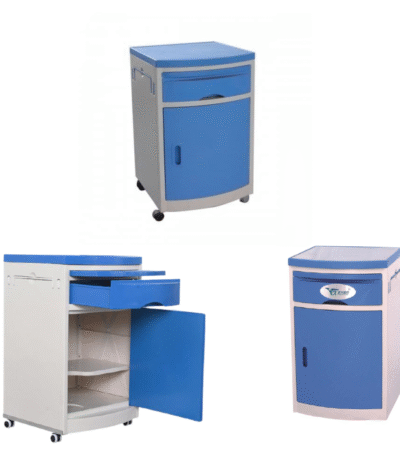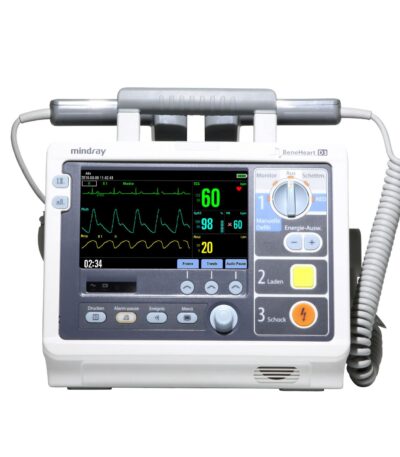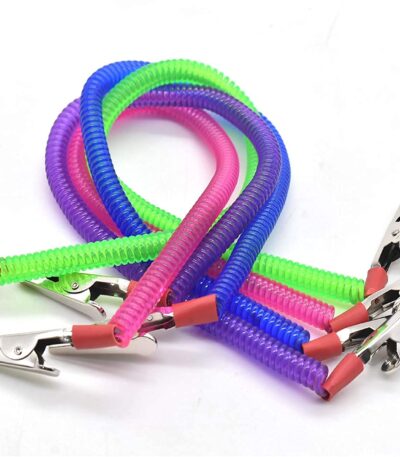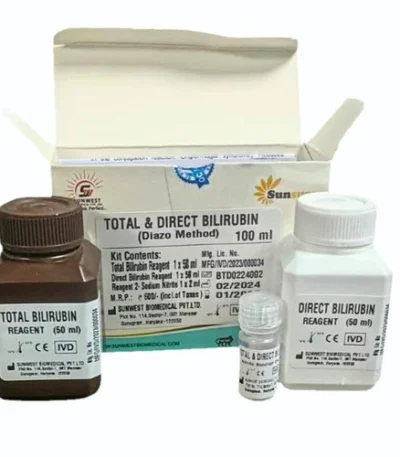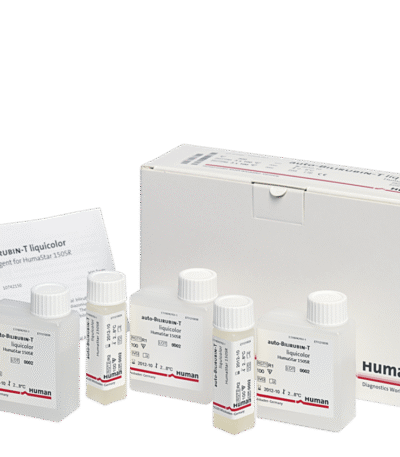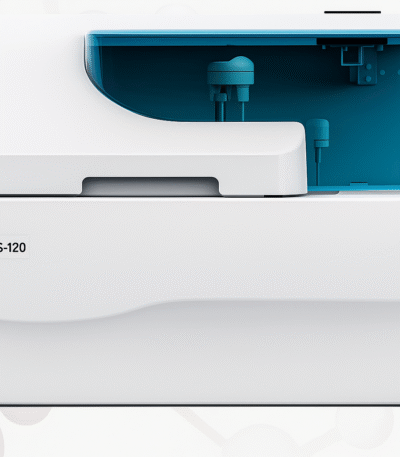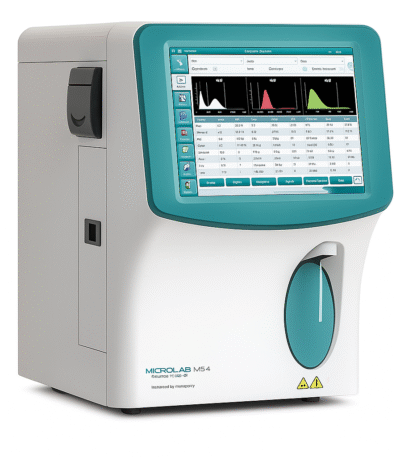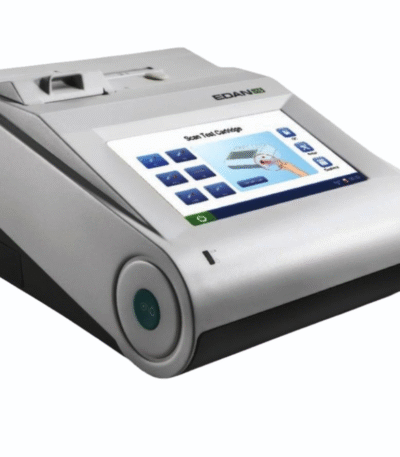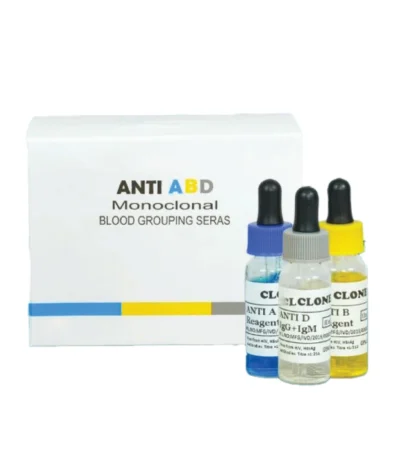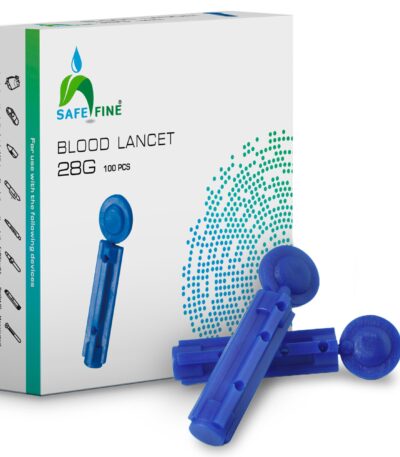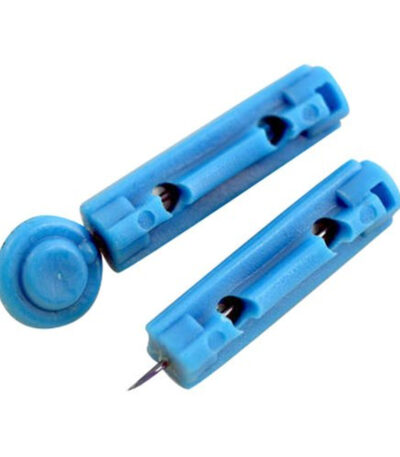Filter by price
Stock status
Showing 85–96 of 572 results
Bedside Locker
The Hospital Bedside Locker is a compact and functional storage unit designed for patient convenience and hospital efficiency. It is placed beside the patient’s bed to store personal items, medicines, and hospital supplies. Made from high-quality steel or ABS plastic, it ensures durability, hygiene, and easy maintenance in demanding healthcare environments.
BeneHeart Defibrillator (by Mindray)
The BeneHeart series — including models such as D3, D6, and D30 — delivers biphasic defibrillation shocks with adjustable energy levels up to 360 joules, ensuring effective cardiac resuscitation for adults and children. It uses impedance-compensated technology that automatically adjusts the shock energy to match the patient’s body resistance, improving success rates during cardiac arrest management.
The unit is equipped with a bright color display, intuitive controls, and built-in safety features that allow clinicians to operate it quickly and confidently during emergencies. It also supports data storage, review, and transfer, making it suitable for both hospital and field applications.
Bib Holder (Dental Bib Clip / Chain Holder)
Bilirubin – Total & Direct
🔬 1. Direct Bilirubin (Conjugated) — Diazo Method
Principle
Direct (conjugated) bilirubin reacts directly with diazotized sulfanilic acid to form azobilirubin, a reddish-purple complex.
-
Absorbance: ~540–560 nm
-
Method: Endpoint or timed endpoint
-
No accelerator needed (only conjugated bilirubin reacts)
Reagent Components
-
Sulfanilic acid
-
Sodium nitrite
-
Hydrochloric acid (for diazo formation)
-
Buffer (acetate)
-
Preservatives
Some manufacturers supply:
-
R1: Buffer
-
R2: Diazo reagent
🧪 2. Total Bilirubin — Diazo Method (Accelerated)
Principle
Unconjugated bilirubin requires an accelerator to react with the diazo reagent.
Common accelerators:
-
Caffeine–benzoate
-
Surfactants
-
Methanol or DMSO (older methods)
Total bilirubin reacts with diazo reagent to form azobilirubin.
-
Absorbance: ~540–560 nm
-
Method: Endpoint or timed endpoint
Reagent Components
-
Caffeine-benzoate accelerator
-
Sulfanilic acid
-
Sodium nitrite
-
Acid buffer
-
Stabilizers and preservatives
Formats:
-
1-reagent systems (common today)
-
2-reagent systems (R1 accelerator + R2 diazo reagent)
Bilirubinometer
A bilirubinometer is a medical diagnostic device used to measure the level of bilirubin in newborns (and sometimes adults) to identify and monitor jaundice
There are two main types:
-
Transcutaneous bilirubinometers: Non-invasive devices that estimate serum bilirubin by shining light onto the baby’s skin (often the forehead, sternum, or ear).
-
Serum bilirubinometers: Use a small blood sample and laboratory optics or photometry to give a direct bilirubin reading.
Biochemistry Reagents
1. Diagnostic Purpose
Biochemistry reagents are designed to quantitatively measure analytes such as:
-
Liver function markers (ALT, AST, ALP, GGT, Bilirubin, Total Protein)
-
Renal function markers (Urea, Creatinine, Uric Acid)
-
Electrolytes (Sodium, Potassium, Chloride—depending on analyzer type)
-
Lipid profile (Cholesterol, Triglycerides, HDL, LDL)
-
Glucose metabolism (Glucose, HbA1c kits depending on system)
-
Enzymes and substrates (LDH, CK, Amylase, Lipase)
2. Types of Formulations
Biochemistry reagents may come in:
-
Single-reagent systems
(One ready-to-use bottle) -
Two-reagent systems
(R1 buffer + R2 starter/working reagent) -
Lyophilized reagents
(Require reconstitution) -
Liquid-stable reagents
(Long shelf-life, preferred for automated analyzers)
3. Compatibility
Designed for:
-
Fully automated clinical chemistry analyzers
-
Semi-automated bench-top analyzers
-
Point-of-care analyzers (specific formats)
BIOELAB AS‑120 Fully Automatic Clinical Chemistry Analyzer / AS‑120 Auto Biochemistry Analyzer
Key Features & Specifications
-
Type: Fully automatic, random-access chemistry analyzer with open reagent system (can use reagents from different suppliers).
-
Throughput: Approximately 120 tests per hour.
-
Reagent capacity: Typically around 80 positions (40 for R1 + 40 for R2) with ~40 sample positions.
-
Reaction cuvettes: Around 50 cuvettes; reaction volume ~150 µL to ~330 µL.
-
Optical system: Multi-wavelength detection (340 nm, 405 nm, 450 nm, 505/510 nm, 546 nm, 578 nm, 630 nm, 700 nm).
-
Reagent tray cooling: Continuous cooling system maintaining 2 °C–14 °C.
-
Sample & reagent probe features: Liquid level detection, collision protection, automatic probe cleaning and adjustment.
-
Calibration & quality control: Supports linear and nonlinear calibration, multi-point calibration, Westgard QC plotting.
-
Physical footprint: Approximately 750 mm × 550 mm × 490 mm; weight ~70 kg.
BIOELAB-3-Part Hematology Analyzer EC-30
✅ Key Features & Specifications
Here are the primary specifications and features of the EC‑30:
-
The throughput is up to 60 samples/hour in whole blood mode. labtex.cn+3en.bioelab.net+3Alibaba+3
-
It supports a 3‑part WBC differential (i.e., neutrophils, lymphocytes + mid cell group, granulocytes) — which is standard for “3‑part” hematology analyzers. Wikipedia+2en.bioelab.net+2
-
Minimum sample volume: about 9 µL of whole blood. en.bioelab.net+1
-
Built‑in 10.4‑inch colour touch screen display. Alibaba+1
-
Data storage: capable of storing large number of results (for example, up to ~500,000 results in some specs) including histograms. Scribd+2en.bioelab.net+2
-
Compact design, around < 28 kg in some spec sheets; built‑in thermal printer in some versions. en.bioelab.net+1
-
Reagent requirements: typically a diluent plus a lysing reagent for the 3‑part differential mode. en.bioelab.net+1
-
Interface: USB, LAN ports etc for connectivity. en.bioelab.net
Blood Collection Tubes
Blood Gas and Chemistry Analyzer (Edan – i15)
- Portable and Lightweight: Weighs only about 3.65 kg (8.05 lb), with a built-in rechargeable battery allowing for up to 50 continuous tests, making it highly mobile for bedside use.
- Easy to Use: Features an intuitive 7-inch color LCD touch screen and a simple, three-step operation procedure (sample collection, mixing, and introduction).
- Maintenance-Free: The use of disposable test cartridges and calibrant fluid packs eliminates the need for routine maintenance, gas cylinders, and minimizes biohazard risks.
- Fast Results: Provides results in as little as 35 seconds to one minute after sample aspiration, enabling quick clinical decisions.
- Data Management: Capable of storing up to 10,000 patient data points and supports seamless integration with Laboratory Information Systems (LIS) or Hospital Information Systems (HIS) via wired (USB, RS232) or wireless (WLAN) networking.
- Built-in Quality Control: Ensures accuracy and reliability through internal quality control mechanisms, an electronic simulator, and liquid quality control solutions.

